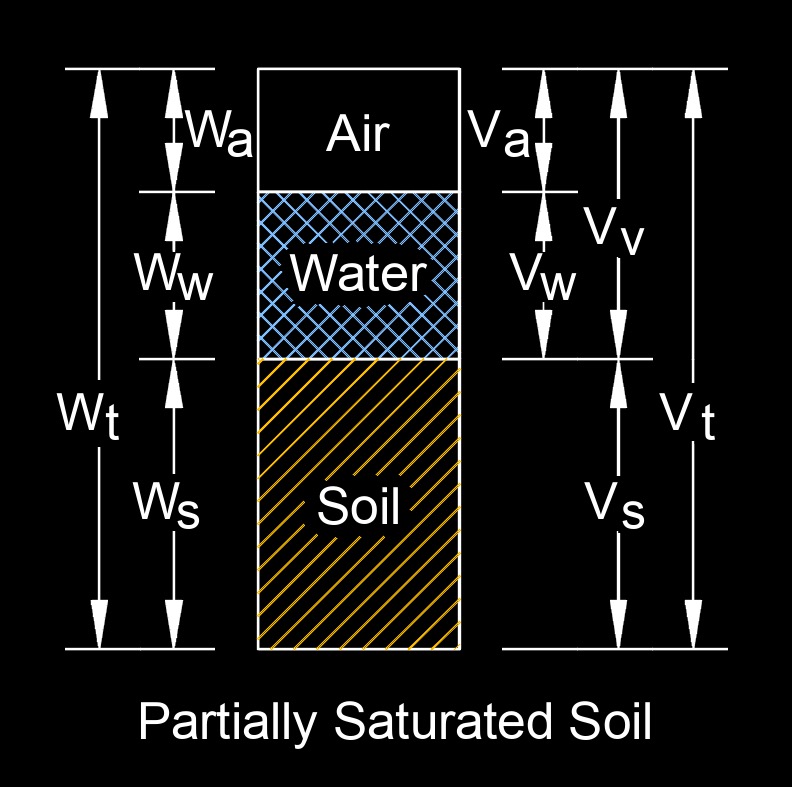Moisture Unit Weight
Moisture Unit Weight Formula |
||
|
\( \gamma_m \;=\; \dfrac{ W_t }{ V }\) (Moisture Unit Weight) \( W_t \;=\; \gamma_m \cdot V \) \( V \;=\; \dfrac{ W_t }{ \gamma_m }\) |
||
| Symbol | English | Metric |
| \( \gamma_m \) (Greek symbol gamma) = Moisture Unit Weight | \( lbm \;/\; ft^3 \) | \( N \;/\; m^3\) |
| \( W_t \) = Total Weight of Soil | \(lbf\) | \(N\) |
| \( V \) = Volume of Soil | \(ft^3\) | \(m^3\) |
 Moisture unit weight, abbreviated as \(\large{ \gamma_m } \), is the total weight of soil per volume of soil or when the soil voids are filled with water and no air. Moisture unit weight takes into account the weight of both the solid particles of the material and the water filling the void spaces between them. It is an important parameter in geotechnical engineering and soil mechanics as it affects the behavior and stability of soils and other porous materials.
Moisture unit weight, abbreviated as \(\large{ \gamma_m } \), is the total weight of soil per volume of soil or when the soil voids are filled with water and no air. Moisture unit weight takes into account the weight of both the solid particles of the material and the water filling the void spaces between them. It is an important parameter in geotechnical engineering and soil mechanics as it affects the behavior and stability of soils and other porous materials.
The moisture unit weight of a soil or material can be determined through laboratory tests or estimated based on empirical relationships with other properties such as the moisture content, porosity, or void ratio. It is influenced by factors such as the composition of the soil, its degree of compaction, and the amount of water present. Understanding the moisture unit weight is crucial for various engineering applications, including slope stability analysis, foundation design, and estimation of settlement and bearing capacity of soil.

